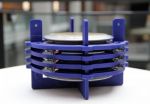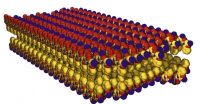(Press-News.org) In the October issue of BioScience, a group of ecotoxicologists argue that the US Environmental Protection Agency's (USEPA) current practices for evaluating pesticide safety are inadequate and likely to result in decisions biased toward industry interests.
In their article, Michelle Boone of Miami University and her colleagues note that most pesticide toxicity tests used in risk assessments are conducted by pesticide manufacturers themselves, which the authors believe can result in untenable conflicts of interest. Moreover, rigid inclusion criteria often mean that potentially relevant studies are barred from the USEPA's assessment process. The article highlights the case of atrazine, which the agency reassessed on the basis of a single manufacturer-funded study. The herbicide was ultimately deemed safe to amphibians, despite the existence of a number of studies that could have led to a different conclusion.
The researchers also cite other problems with USEPA risk assessment practices, including inconsistent application of criteria among taxonomic groups and an overreliance on laboratory studies, among others. Taken together, these problems result in a "presumption of innocence" that Boone and her colleagues maintain may be inappropriate for the evaluation of potentially harmful substances. The authors conclude that "the risk assessment process can and should be improved so that decisions are made with the best available data with an evidence-based approach."
The authors pose several recommendations for reform. Chief among them is the use of an independent third party to stand as a barrier between industry and research. This separation would serve to reduce concerns over conflicts of interest. In addition, they recommend a wider use of all available research—particularly field studies—and suggest that the assessment process should be made more transparent.
INFORMATION:
BioScience, published monthly by Oxford Journals, is the journal of the American Institute of Biological Sciences (AIBS). BioScience is a forum for integrating the life sciences that publishes commentary and peer-reviewed articles. The journal has been published since 1964. AIBS is a meta-level organization for professional scientific societies and organizations that are involved with biology. It represents nearly 160 member societies and organizations. Follow BioScience on Twitter @BioScienceAIBS.
Oxford Journals is a division of Oxford University Press. Oxford Journals publishes well over 300 academic and research journals covering a broad range of subject areas, two-thirds of which are published in collaboration with learned societies and other international organizations. The division been publishing journals for more than a century, and as part of the world's oldest and largest university press, has more than 500 years of publishing expertise behind it. Follow Oxford Journals on Twitter @OxfordJournals.
Pesticide risk assessments seen as biased
The Environmental Protection Agency's pesticide risk assessment practices may invite bias and underestimate potential harm
2014-09-03
ELSE PRESS RELEASES FROM THIS DATE:
Seizures and sudden death: When SUMO 'wrestles' potassium channels
2014-09-03
A gene crucial for brain and heart development may also be associated with sudden unexplained death in epilepsy (SUDEP), the most common cause of early mortality in epilepsy patients.
Scientists at The University of Texas MD Anderson Cancer Center have created a new animal model for SUDEP and have shown that mice who have a partial deficiency of the gene SENP2 (Sentrin/SUMO-specific protease 2) are more likely to develop spontaneous seizures and sudden death. The finding occurred when observing mice originally bred for studying a link between SENP2 deficiency and cancer.
"SENP2 ...
Researchers unlock new mechanism in pain management
2014-09-03
It's in the brain where we perceive the unpleasant sensations of pain, and researchers have long been examining how calcium channels in the brain and peripheral nervous system contribute to the development of chronic pain conditions.
Neuroscientist Gerald Zamponi, PhD, and his team at the University of Calgary's Hotchkiss Brain Institute have discovered a new mechanism that can reverse chronic pain. Using an animal model, their research has found that pain signals in nerve cells can be shut off by interfering with the communication of a specific enzyme with calcium ...
Changing temperature powers sensors in hard-to-reach places
2014-09-03
A centuries-old clock built for a king is the inspiration for a group of computer scientists and electrical engineers who hope to harvest power from the air.
The clock, powered by changes in temperature and atmospheric pressure, was invented in the early 17th century by a Dutch builder. Three centuries later, Swiss engineer Jean Leon Reutter built on that idea and created the Atmos mechanical clock that can run for years without needing to be wound manually.
Now, University of Washington researchers have taken inspiration from the clock's design and created a power ...
Tweets during 2013 Colorado floods gave engineers valuable data on infrastructure damage
2014-09-03
Tweets sent during last year's massive flooding on Colorado's Front Range were able to detail the scope of damage to the area's infrastructure, according to a study by the University of Colorado Boulder.
The findings can help geotechnical and structural engineers more effectively direct their reconnaissance efforts after future natural disasters—including earthquakes, tsunamis and tornadoes—as well as provide them data that might otherwise be lost due to rapid cleanup efforts.
"Because the flooding was widespread, it impacted many canyons and closed off access to communities ...
Galapagos invasion is global warning
2014-09-03
A new study led by a PhD researcher at The University of Western Australia has revealed that parts of the iconic Galapagos Islands have been overrun by invasive plants from other parts of the world.
"People may be shocked that a place considered so iconic for biodiversity is so overrun with weeds in some areas despite ongoing control effort by National Park rangers, but this is really a global story," lead author from the UWA School of Plant Biology Mandy Trueman said.
The results published in the open access journal Neobiota confirm that in the humid highland part ...
Peptoid nanosheets at the oil-water interface
2014-09-03
From the people who brought us peptoid nanosheets that form at the interface between air and water, now come peptoid nanosheets that form at the interface between oil and water. Scientists at the U.S. Department of Energy (DOE)'s Lawrence Berkeley National Laboratory (Berkeley Lab) have developed peptoid nanosheets - two-dimensional biomimetic materials with customizable properties - that self-assemble at an oil-water interface. This new development opens the door to designing peptoid nanosheets of increasing structural complexity and chemical functionality for a broad ...
How well does bariatric surgery work?
2014-09-03
SEATTLE—The number of bariatric surgeries done each year in the United States has ballooned. Now, in an August 27 state-of-the-art review in The BMJ and a September 3 editorial in JAMA, David Arterburn, MD, MPH, weighs the evidence on the benefits and risks of the various types of this surgery.
"It's critical that we find effective—and cost-effective—ways to treat severe obesity," said Dr. Arterburn, an associate investigator at Group Health Research Institute, a Group Health physician, and an affiliate associate professor of medicine at the University of Washington School ...
Are human breast milk microbiomes 'neutral'?
2014-09-03
Human breast milk is considered the most ideal source of nutrition for infants and it should have played a critical role in the evolution and civilizations of human beings. Unlike our intuitive perception, human milk contains a large number of bacterial species, including some opportunistic pathogens of humans. This phenomenon comes as no surprise to scientists and physicians.
Indeed, the existence of milk microbiome is considered to be the result of co-evolutionary and co-adaptive interactions between the microbiome and human host. Furthermore, the dynamic balance in ...
The Lancet Respiratory Medicine: Household air pollution puts more than 1 in 3 people worldwide at risk of ill health and early death
2014-09-03
Household air pollution, caused by the use of plant-based or coal fuel for cooking, heating, and lighting, is putting nearly three billion people worldwide at risk of ill health and early death, according to a new Commission, published in The Lancet Respiratory Medicine journal.
A third of the world's population use plant-based solid fuels such as wood or charcoal, or coal, to cook, heat, and light their homes, primarily in Asia and Africa. These smoky, dirty fuels are often used in an open fire or simple stove, resulting in high levels of household air pollution in poorly ...
Researchers reveal carbon emissions of PlayStation 3 game distribution
2014-09-03
It's not always true that digital distribution of media will have lower carbon emissions than distribution by physical means, at least when file sizes are large.
That's the conclusion of a study published in Yale's Journal of Industrial Ecology that looked at the carbon footprint of games for consoles such as PlayStation®3. Researchers found that Blu-ray Discs delivered via retail stores caused lower greenhouse gas emissions than game files downloaded over broadband Internet. For their analysis, the investigators estimated total carbon equivalent emissions for an 8.8-gigabyte ...
LAST 30 PRESS RELEASES:
Home-delivered groceries improve blood sugar control for people with diabetes facing food insecurity
MIT researchers identified three cognitive skills we use to infer what someone really means
The Iberian Peninsula is rotating clockwise according to new geodynamic data
SwRI, Trinity University to study stable bacterial proteins in search of medical advances
NIH-led study reveals role of mobile DNA elements in lung cancer progression
Stanford Medicine-led study identifies immune switch critical to autoimmunity, cancer
Research Alert: How the Immune System Stalls Weight Loss
Glucagon-like peptide 1 receptor agonist use and vertebral fracture risk in type 2 diabetes
Nonadherence to cervical cancer screening guidelines in commercially insured US adults
Contraception and castration linked to longer lifespan
An old jeweler’s trick could unlock next-generation nuclear clocks
Older age, chronic kidney disease and cerebrovascular disease linked with increased risk for paralysis and death after West Nile virus infection
New immune role discovered for specialized gut cells linked to celiac disease
A new ‘hypertropical’ climate is emerging in the Amazon
Integrated piezoelectric vibration and in situ force sensing for low-trauma tissue penetration
Three-hit model describes the causes of autism
Beech trees use seasonal soil moisture to optimize water uptake
How thinning benefits growth for all trees
Researchers upgrades 3-PG forest model for improved accuracy
Achieving anti-thermal-quenching in Tb3+-doped glass scintillators via dual-channel thermally enhanced energy transfer
Liquid metal modified hexagonal boron nitride flakes for efficient electromagnetic wave absorption and thermal management
Failure mechanisms in PEM water electrolyzers
Study captures how cancer cells hide from brain immune cells, shows that removing their “don’t eat me” signals stops their escape
New breakthrough in detecting ‘ghost particles’ from the Sun
Half of people arrested in London may have undiagnosed ADHD, study finds
From dots to lines: new database catalogs human gene types using ’ACTG’ rules
Persistent antibiotic resistance of cholera-causing bacteria in Africa revealed from a multinational workshop for strengthening disease surveillance
SwRI, Trinity University to synthesize novel compound to mitigate effects of stroke, heart attack
Novel endocrine therapy giredestrant improves disease-free survival over standard of care for patients with early-stage breast cancer in phase III lidERA trial
Gen Z views world as "scary place" with growing cynicism about ability to create change
[Press-News.org] Pesticide risk assessments seen as biasedThe Environmental Protection Agency's pesticide risk assessment practices may invite bias and underestimate potential harm




